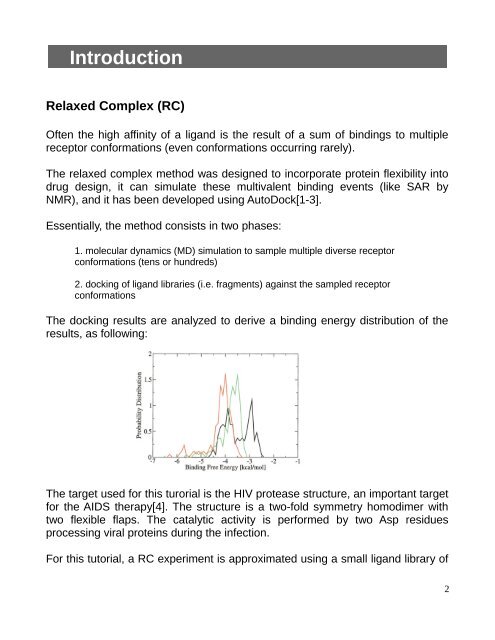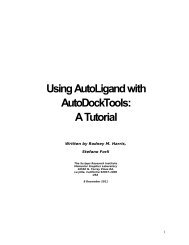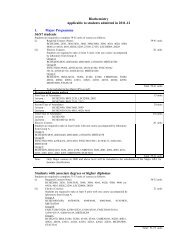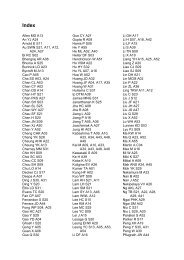AutoDock Virtual Screening: Relaxed Complex scheme
AutoDock Virtual Screening: Relaxed Complex scheme
AutoDock Virtual Screening: Relaxed Complex scheme
You also want an ePaper? Increase the reach of your titles
YUMPU automatically turns print PDFs into web optimized ePapers that Google loves.
Introduction<br />
<strong>Relaxed</strong> <strong>Complex</strong> (RC)<br />
Often the high affinity of a ligand is the result of a sum of bindings to multiple<br />
receptor conformations (even conformations occurring rarely).<br />
The relaxed complex method was designed to incorporate protein flexibility into<br />
drug design, it can simulate these multivalent binding events (like SAR by<br />
NMR), and it has been developed using <strong>AutoDock</strong>[1-3].<br />
Essentially, the method consists in two phases:<br />
1. molecular dynamics (MD) simulation to sample multiple diverse receptor<br />
conformations (tens or hundreds)<br />
2. docking of ligand libraries (i.e. fragments) against the sampled receptor<br />
conformations<br />
The docking results are analyzed to derive a binding energy distribution of the<br />
results, as following:<br />
The target used for this turorial is the HIV protease structure, an important target<br />
for the AIDS therapy[4]. The structure is a two-fold symmetry homodimer with<br />
two flexible flaps. The catalytic activity is performed by two Asp residues<br />
processing viral proteins during the infection.<br />
For this tutorial, a RC experiment is approximated using a small ligand library of<br />
2







